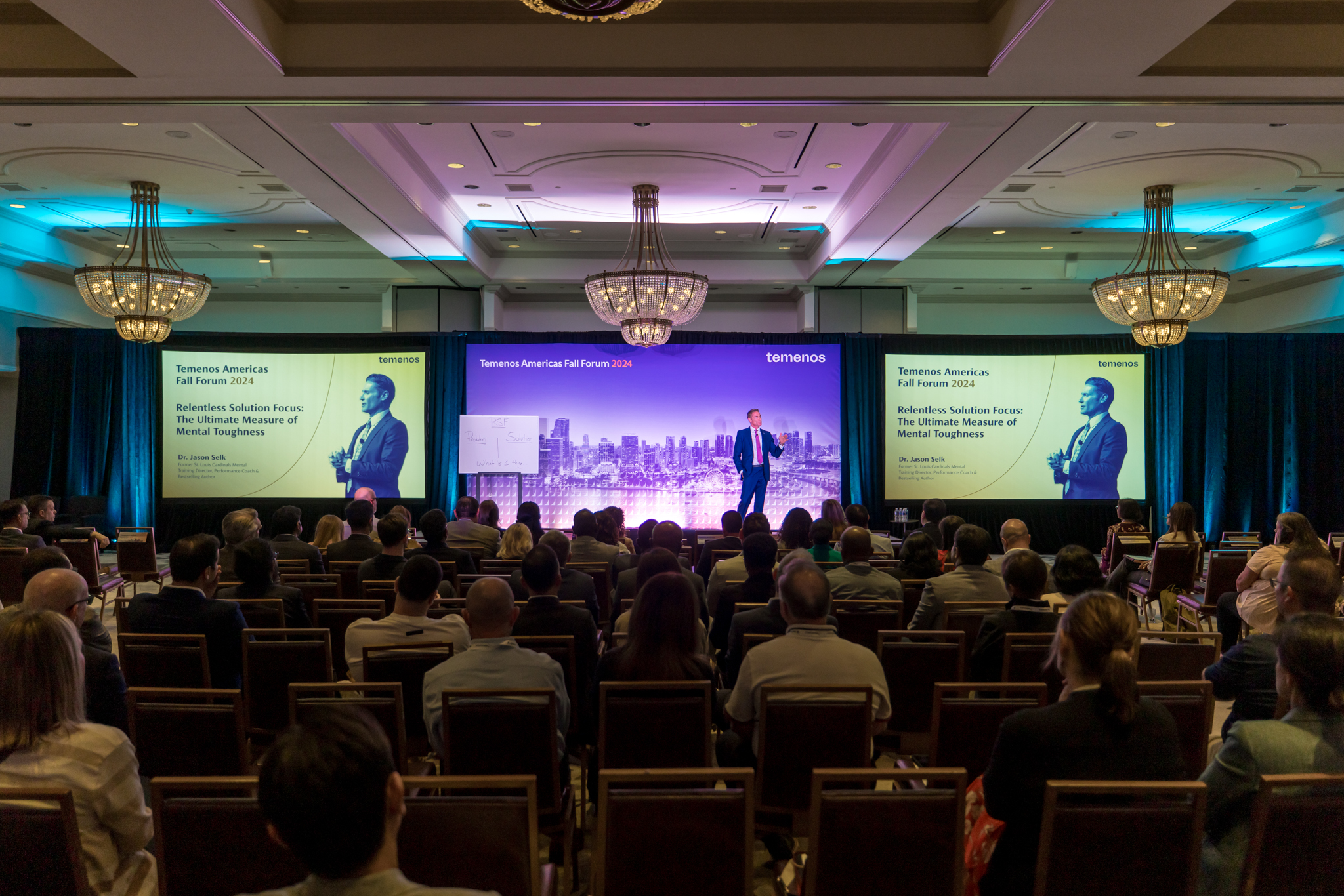The Business Benefits of Innovation: 7 Lessons Learned at the Temenos Americas Fall Forum
The Temenos Americas Fall Forum 2024 brought together over 350 financial and tech leaders from across the Americas for two days packed with insightful discussions on how innovation can drive better business outcomes. From digital transformation to hyper-personalized customer experiences, the event was a deep dive into the tools and strategies financial institutions need to thrive. If you missed it or just need a refresher, don’t worry—we’ve got you covered. Here are seven key business lessons from the event that can help your institution harness the power of innovation and stay ahead of the curve.
1. The first order of business is business.
Businesses, no matter who they are, create value for shareholders by selling a given market what it wants, and banks and credit unions are no different. That’s why decisions among financial institutions to modernize the core, loan management systems, onboarding or other solutions must be seen from the lens of a business perspective. Any decision to upgrade technology must form part of a strategic business plan and not just for the sake of upgrading technology. After all, financial services institutions are not public utilities—customers can ditch you for a competitor with the swipe of a thumb. Efficiency pays off in the end.

SaaS represents opportunity to focus on customer service and provide different services to the customers in our region.
— Kirk Henry, Chief Innovation and Digital Officer – ANSA Merchant Bank Limited
2. Environmental, Social & Governance (ESG) is a core business element
Good ESG practices are not complementary programs or PR campaigns designed to make a bank or credit union look good. They’re what business is all about today. Financial institutions will reap rewards by backing projects that prioritize environmental issues, social issues and corporate governance. Technology can help banks be more ESG-compliant themselves—migrating to the cloud can cut emissions, as relying on data centers demands less electricity than running servers and other hardware in house. And once they are more agile and ESG-friendly themselves after modernizing, financial institutions can more efficiently invest in green initiatives that help companies and communities cut emissions and manage resources better. They can also invest in those who strengthen corporate governance through improved compensation, ethics, compliance, and risk management practices. Doing the right thing is a huge business. Finance it best and win.
ESG should not be an add-on. When you digitally transform, ESG should be a part of the journey.”
— Kalliopi Chioti, Chief ESG Officer, Temenos.
3. Go hyper-personal or go home
Most readers of this blog likely have a solid understanding of “customer experiences” and “member experiences,” but how well do you really know your customers? For them, “good user experiences” don’t just mean polite service or fast responses. They’re looking for hyper-personalized solutions that fit their unique needs. They may not use industry buzzwords, but their expectations are clear. And here’s a bonus tip: younger, digitally savvy customers are eager to become influencers in their own right. Win their loyalty, and they’ll spread the word about your brand to the world.
Ask yourself ‘this is what I want my customer experience to look like. What can I do with my Temenos tools and what configurations do I need to make this happen?”
— Vincent Chamasrour, Customer Value Director, Temenos
4. “Youth is wasted on the young,” — George Bernard Shaw, who knew little of banking with Millennials and Gen Z.
Younger customers may be figuring out their ways in the world when it comes to careers, but that doesn’t mean they’re not big banking customers. To the contrary, Millennials and Gen Zers are pretty much taking the reins of the world’s businesses big and small, so financial institutions that win them over now will reap rewards as they make bigger financial decisions as they move ahead in life.

Credit unions have a stated focus of driving younger members and serving the underserved.”
— Julie Nielsen, VP Channel Partnership, Open Lending
5. Technology is a driver, never your goal
It sounds counterintuitive coming from a provider of banking software and solutions, but it’s common sense really. Technology should not be your sole focus when it comes to innovation. Crafting business strategies in the form of products and services should take top priority, and technology should empower employees to manage the business instead of spending time and money managing IT. When viewed as a core component of a business strategy and not a perfunctory add-on, technology frees resources to create value. Customers today expect business to take place when it suits them. So suit them.

Our borrowers want to do business with us when we are not there. They want to interact when the lights are not on.”
— Wade Saunders, SVP of Consumer Lending – Idaho Central Credit Union
6. Business is lightning fast these days, yet innovation won’t hold you back
The business world moves lightning fast these days. That’s obvious. But what’s not always obvious is that technology migrations can go at their own pace without compromising your lightning-fast pace of doing business, especially where the core is concerned. Any decision to migrate to a new banking core or other important solutions can evolve at a speed that doesn’t disrupt the business. There are many paths to modernization, but few call for an outright rip-and-replace of existing systems. Most will find their own way. And once your innovation is complete, you’ll be turbocharged to win the race.
We are everyone’s banking platform.”
— Rodrigo Silva, President, Temenos Americas
7. Be relentless on what works
Keynote Speaker Dr. Jason Selk addressed the very real and powerful benefits that come from the Relentless Solution Focus, or techniques to focus on what works instead of what doesn’t, the latter being almost hard-wired into us all. When things seem to go wrong, focus on the one thing you can do right now that will make the situation better. Keep repeating that process instead of focusing on the problem. Problem-centric thought fuels self-doubt, which scuttles success.
If you can answer these questions when that sense pops up that things are headed south, you will train your brain to focus on what works and succeed—and live—longer.
- In the last 24 hours what are three things I did well?
- In the upcoming 24 hours what is one thing I want to improve (not perfect but improve)?
- What is one action step I can take to help make the improvement?

Recognize what you do well and be relentless on being better.”
—Dr. Jason Selk, sports psychologist and bestselling author.